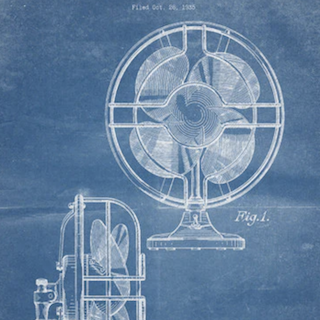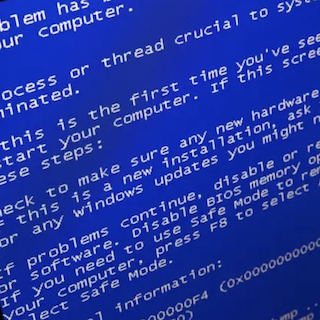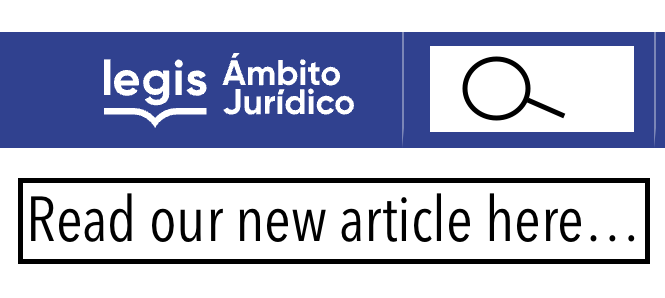The Future of Intellectual Property in Legal English
What does the future hold for intellectual property in Legal English?

1
Increasing importance of IP in the digital age:
With the rapid advancement of technology and the rise of digital platforms, intellectual property has become a critical asset for businesses. Protecting and managing IP rights has gained significant importance as companies strive to safeguard their innovations, software, digital content, and branding in the online world.

2
Globalization and harmonization of IP laws:
As economies become increasingly interconnected, there is a growing need for harmonizing intellectual property laws and regulations across different jurisdictions. International agreements and treaties, such as the World Intellectual Property Organization (WIPO) treaties, aim to establish uniform standards and facilitate the protection and enforcement of IP rights on a global scale.

3
Expansion of patentable subject matter:
The definition of patentable subject matter is evolving to keep pace with advancements in technology. In many countries, the scope of patent eligibility has expanded to include software, biotechnology, artificial intelligence (AI), and other emerging fields. However, this trend also poses challenges in determining the boundaries and criteria for patentability in these complex areas.

4
Challenges of protecting IP:
The digital landscape presents new challenges for protecting intellectual property. Online piracy, counterfeiting, and unauthorized use of copyrighted material have become more prevalent. Companies and content creators are grappling with finding effective ways to safeguard their IP rights in the face of rapidly evolving digital technologies and global online platforms.

5
Valuation and monetization:
Intellectual property is increasingly recognized as a valuable asset that can be monetized. Companies are investing in IP valuation to determine the worth of their intellectual property portfolios, which can be essential for licensing, mergers and acquisitions, and attracting investors. Additionally, the emergence of IP marketplaces and licensing platforms has provided opportunities for IP owners to monetize their assets through licensing and collaboration agreements.

Legal English Innovation
Increasing importance:
1

With the rapid advancement of technology and the rise of digital platforms, intellectual property has become a critical asset for businesses. Protecting and managing IP rights has gained significant importance as companies strive to safeguard their innovations, software, digital content, and branding in the online world.
Digital Rights Management (DRM) Technologies: DRM technologies have evolved to provide stronger protection for digital content such as music, videos, e-books, and software. DRM enables content creators and rights holders to apply access controls, encryption, and other measures to prevent unauthorized copying, distribution, and use of their digital assets.
Watermarking and Tracking Technologies: Watermarking techniques have advanced to embed invisible or visible marks in digital content to identify the copyright owner or track the unauthorized use of the content. These technologies help deter piracy and enable copyright holders to identify and take action against infringers.
Blockchain for Copyright Protection: Blockchain technology has emerged as a potential solution for copyright protection and provenance verification. By creating a decentralized and immutable ledger, blockchain can establish a transparent and tamper-proof record of ownership, transfers, and usage of digital assets, including copyrighted works.
Improved Copyright Enforcement Tools: With the rise of online piracy, copyright enforcement tools have advanced to detect and address copyright infringements more efficiently. Automated content recognition systems, keyword filtering algorithms, and advanced image recognition technologies help identify and take down infringing content across online platforms.
Online IP Monitoring and Enforcement Services: Companies specializing in online IP protection offer monitoring services to track and identify potential IP infringements across various online platforms. They employ sophisticated algorithms and crawling technologies to scan websites, social media platforms, and online marketplaces for infringing content. These services assist rights holders in taking prompt enforcement actions against infringers.


Legal English Innovation
Globalization and harmonization of IP laws:
2
As economies become increasingly interconnected, there is a growing need for harmonizing intellectual property laws and regulations across different jurisdictions. International agreements and treaties, such as the World Intellectual Property Organization (WIPO) treaties, aim to establish uniform standards and facilitate the protection and enforcement of IP rights on a global scale.
Filing International Patent Applications
Centralized International Search
Publication and International Publication of the Application
International Preliminary Examination
Choice of National Phase
As of there are 193 member countries of the World Intellectual Property Organization (WIPO).


Legal English Innovation
Expansion of patentable subject matter:
3
The definition of patentable subject matter is evolving to keep pace with advancements in technology. In many countries, the scope of patent eligibility has expanded to include software, biotechnology, artificial intelligence (AI), and other emerging fields. However, this trend also poses challenges in determining the boundaries and criteria for patentability in these complex areas.


Legal English Innovation
Challenges of protecting IP:
4
The digital landscape presents new challenges for protecting intellectual property. Online piracy, counterfeiting, and unauthorized use of copyrighted material have become more prevalent. Companies and content creators are grappling with finding effective ways to safeguard their IP rights in the face of rapidly evolving digital technologies and global online platforms.


Legal English Innovation
Valuation and monetization:
5
Intellectual property is increasingly recognized as a valuable asset that can be monetized. Companies are investing in IP valuation to determine the worth of their intellectual property portfolios, which can be essential for licensing, mergers and acquisitions, and attracting investors. Additionally, the emergence of IP marketplaces and licensing platforms has provided opportunities for IP owners to monetize their assets through licensing and collaboration agreements.


Legal English Innovation
Writing Style Tips
Patent Writing Tips

Understand the Invention:
Gain a thorough understanding of the invention before starting the writing process. Review any technical specifications, drawings, prototypes, or other relevant materials to ensure accuracy in describing the invention.
Prior to writing claim(s) answer these questions:
What is the invention?
What are the elements that make up the invention?
How do the elements relate to one another?
Do you have more than one invention?
Tangible: Apparatus, machine, composition
Method: Making or Using
Are there multiple embodiments of the same invention?

Start with a Clear Title:
Begin the patent application with a concise and descriptive title that accurately represents the invention.

Start with a Correct Structure:
A claim in a utility application or patent has three (3) parts:
1. Preamble: • Provides context for the claimed invention • Language of a preamble may or may not limit the claimed invention
2. Transitional phrase: • Establishes whether the claim is “open,” “closed” or “partially open” • In other words, the degree to which a claim is limited to only those elements recited in the claim body
3. Claim body: • Recites the limitations (structure and/or acts in clear, full, concise terms) necessary to define the invention

Preamble:
Every claim needs a transition.
The most common transitions are: “comprising” “consisting essentially of” and “consisting of.”
• “Comprising” is by far the most common because it means the invention includes but is not limited to the elements identified in the claim.
• “Consisting essentially of” limits the scope of a claim to the specified materials or steps “and those that do not materially affect the basic and novel characteristic(s)” of the claimed invention.
• “Consisting of” is closed and means that the invention is limited to the elements identified in the claim.
• Try: “A shovel…”
• Instead of: “A shovel for digging…”

Antecedent Basis:
The first time you introduce a limitation (e.g., an element, characteristic, internal reference, etc.) you MUST introduce it with either “a” or “an”, as is grammatically appropriate. (e.g., Primary antecedent basis)
• Subsequently you refer to the already introduced limitation by either “said” or “the.” (e.g., Secondary antecedent basis)
Example: antecedent basis issues
• A lack of clarity could arise where a claim refers to “said lever” or “the lever,” where the claim contains no earlier recitation or limitation of a lever and where it would be unclear as to what element the limitation was making reference.
• Similarly, if two different levers are recited earlier in the claim, the recitation of “said lever” in the same or subsequent claim would be unclear where it is uncertain which of the two levers was intended.

Use Clear and Definite Language:
Be specific and precise in your language. Avoid ambiguity or vague terminology that could lead to misinterpretation or confusion.
See more patent drafting tips here at the USPTO site.


Include Detailed Drawings:
Supplement the written description with detailed drawings or diagrams that illustrate the invention’s structure, components, and relationships. Ensure the drawings are clear, labeled, and referenced in the description.

Emphasize Novelty and Inventive Step:
Highlight the novel aspects and innovative elements of the invention. Clearly explain how it differs from existing technologies or prior art. Demonstrate the inventive step or non-obviousness of the invention.

Support Claims with Evidence:
Claims define the scope of protection sought for the invention. Ensure that the claims are supported by the detailed description and drawings. Clearly link the claims to specific features or elements described in the application.

Review and Edit Carefully:
After drafting the application, review it thoroughly for accuracy, clarity, and consistency. Check for grammatical errors, typos, and ensure that the application meets the format and filing requirements of the patent office where you plan to file.



Legal English Innovation

Leading Patent Offices

CNIPA:
The China National Intellectual Property Administration (CNIPA) received the highest number of patent applications in 2020, with over 1.4 million filings.
USPTO:
The United States Patent and Trademark Office (USPTO) received around 600,000 patent applications in 2020.
EPO:

Legal English Innovation
About the Author
Eric Froiland
Eric is a legal English teacher from the United States and has been based out of Bogota, Colombia for the last 10 years. He is the owner and founder of Legal English Innovation SAS, which is recognized as the top legal English academy in Colombia and is an official Test of Legal English Skills (TOLES) examination center.


